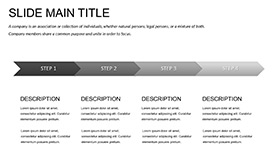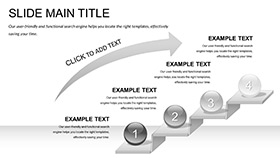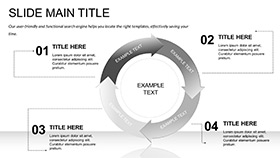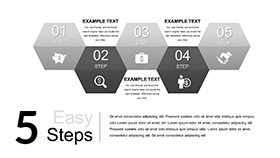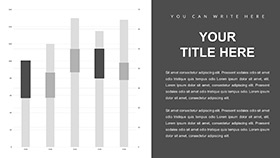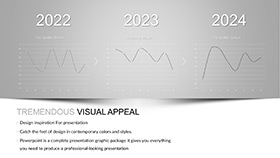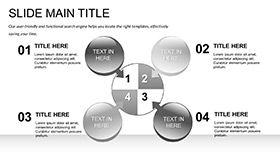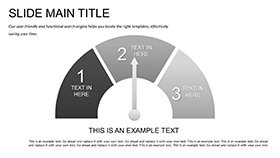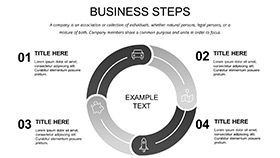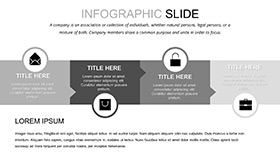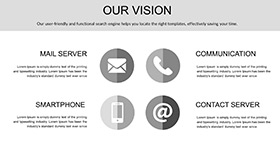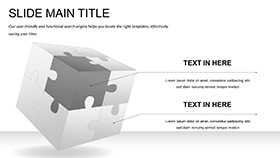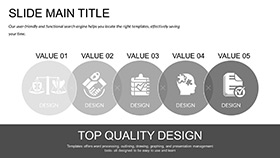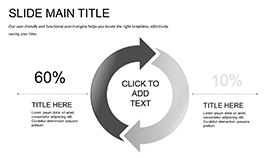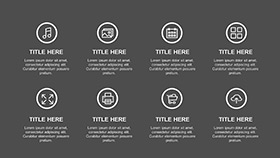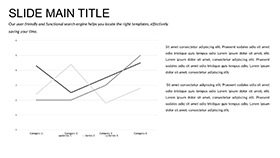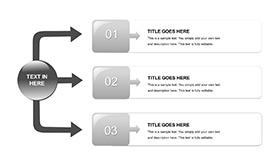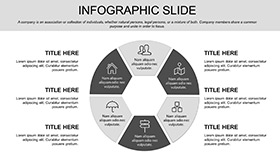Navigating anesthesia for patients with cardiac histories demands clarity amid complexity - where one overlooked detail can shift outcomes. Our Anesthesia in Patients PowerPoint Template equips anesthesiologists and surgeons with 28 diagrams to dissect protocols, risks, and recoveries with surgical focus. These slides illuminate non-cardiac interventions, turning dense guidelines into accessible roadmaps that inform decisions and ease consultations.
Optimized for PowerPoint 2016+, it offers three masters, backgrounds in sterile whites and accents, plus seven color schemes for risk gradations. Available in multiple sizes - 16:9 widescreen, 4:3 standard, 16:10 - this .potx and .jpg bundle adapts to any venue, from OR briefings to grand rounds.
Key Building Blocks for Clinical Excellence
The template`s architecture prioritizes utility, with layouts that mirror surgical flows. Backgrounds minimize distractions, while masters standardize dosing charts or timeline headers for instant recognition.
- 28 Targeted Diagrams: From dosage pyramids to complication trees, all fully animatable and resizable.
- Seven Risk-Based Color Schemes: Green for low-risk phases, amber for monitoring points - intuitive at a glance.
- Pre-Formatted Tables: For pharmacodynamics data, with sortable columns for quick references.
Such elements streamline prep, letting you emphasize patient-specific tweaks over rote assembly.
Syncing with Hospital Systems
Link to EHR exports via table pastes; the flexible sizes ensure compatibility across monitors, from tablets in rounds to beams in theaters.
Practical Scenarios in Cardiac-Aware Anesthesia
This template thrives in high-stakes settings, like pre-op planning for valve replacements. Use the flowchart to trace induction sequences, branching to alternatives for arrhythmia histories.
- Pre-Procedure Briefs: Venn diagrams overlapping cardiac and procedural risks for team alignment.
- Post-Op Debriefs: Gantt-style timelines tracking emergence and extubation milestones.
- Training Modules: Layered anatomy slides revealing vascular impacts, with peel-away effects.
In one residency program, the protocol matrix slide clarified beta-blocker interactions, sparking vital discussions that refined approaches.
Step-by-Step Assembly for Protocol Decks
Bootstrap with a master for your case type - op note style for records. Insert a core diagram like the monitoring dashboard, inputting vitals from charts. Cycle through colors to flag alerts, hyperlink to appendix slides for drug monographs. Animate reveals for step-wise inductions, then rehearse to sync with verbal cues, crafting a deck that anticipates questions.
This ritual turns novices into narrators, honing focus on foresight over formatting.
Strategic Tips for Resonant Rounds
Amplify with analogies - liken titration curves to fine-tuning an orchestra, using the graph tools. Embed QR codes to studies on epidural safety for interactive depth. Prioritize brevity: one protocol per slide, with bolded caveats for emphasis. Test in dim light; the schemes maintain contrast, ensuring legibility under OR lamps.
Outshining ad-hoc builds, it delivers frameworks that foster confidence in critical moments.
Refine Your Delivery, Refine Care
Precision presentations pave safer paths. Acquire the Anesthesia in Patients PowerPoint Template for $22 and infuse your work with unwavering clarity.
Frequently Asked Questions
Does it cover regional anesthesia techniques?
Yes, with dedicated diagrams for blocks and infusions.
Are tables editable for custom data?
Fully - copy-paste from spreadsheets with preserved formatting.
Which slide sizes are available?
16:9 widescreen, 4:3 standard, and 16:10.
Can I animate the risk trees?
Indeed, with built-in paths for sequential branching.
Is it geared toward cardiac histories?
Specifically, with tailored risk assessments.
What formats for sharing?
.potx for edits, .jpg for static views.






